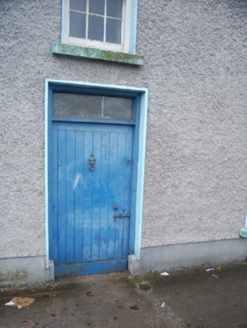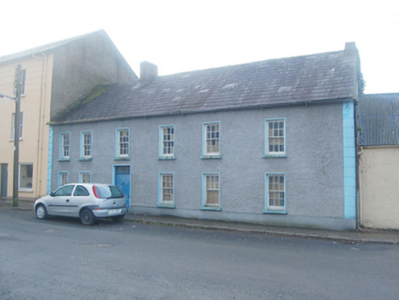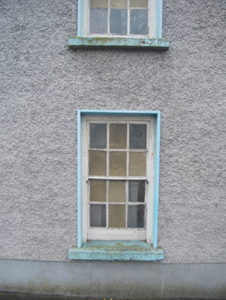Survey Data
Reg No
40827010
Rating
Regional
Categories of Special Interest
Architectural, Historical
Original Use
RIC barracks
In Use As
House
Date
1790 - 1840
Coordinates
224270, 411793
Date Recorded
12/01/2011
Date Updated
--/--/--
Description
Attached six-bay two-storey house, built c. 1800. Later in use as a Royal Irish Constabulary barracks, c. 1840-1920 and extended to north c. 1880. Later in use as a private house. Now out of use. Pitched natural slate roof with projecting eaves course, overhanging cast-iron rainwater goods, and with two red brick chimneystacks (one to the north gable end and one offset to the south side of centre). Roughcast rendered walls over smooth rendered plinth course, and with smooth rendered block quoins to the corners of the front elevation; remains of lime render over rubble stone construction to the north gable end. Square-headed openings with painted stone sills, smooth rendered reveals, and with six- -over-six timber pane sliding sash windows (some now broken). Square-headed doorway (offset to the south side of centre) having smooth rendered reveals, stone plinth blocks, replacement battened timber door, and plain overlight. Road-fronted to the south end of Main Street, Manorcunningham.
Appraisal
This substantial building, probably dating to the very start of the nineteenth century and perhaps earlier, retains its original form and character despite being no longer occupied. Its visual expression and integrity is enhanced by the retention of salient fabric including natural slate roof and timber sliding sash windows. This building is of historic interest as a former Royal Irish Constabulary barracks from c. 1830 until c. 1920. The form of the building and the proportions of the openings suggests that it was original built as a house and later converted for use as a barracks, and also that the building was extended to the north by a by sometime between 1860 and c. 1903 (extension not on Griffiths Valuation map but depicted on Ordnance Survey twenty-five inch map). A Francis Sherridan was the constable here in 1881 (Slater’s Directory). Sensitively restored, this building would make a strongly positive contribution to the streetscape of Manorcunningham, and is an integral element of the social history of the local area.





